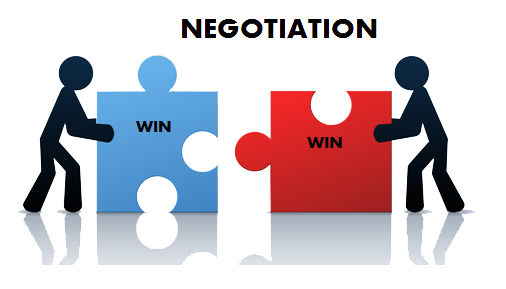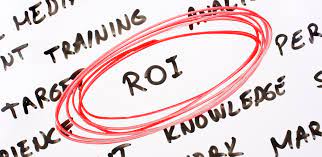Winning the Negotiation Game: Strategies for Every Hard Bargain Move
Negotiation is an art form, a delicate ballet of give and take. And while many might believe it’s all about splitting differences, actual negotiation delves deeper. Echoing the philosophy of “never split the difference,” real negotiation is not about compromise—it’s about collaboration.
As we train and coach sales teams, we find less than 25% of salespeople have received negotiation skills training, and over 75% of professional buyers have been trained. This negotiation skills mismatch results in companies leaving millions of dollars on the table that could have ( and should have) flowed to their bottom lines.
In this post, we will discuss negotiation and the critical role it plays in increasing your gross profit margins.
Understanding the Core of Negotiation
Negotiation is more than just a transactional conversation; it’s a dance of dynamics.
At its heart:
- A mutual conversation aimed at reaching an agreement: Both parties are active participants, each bringing their desires and constraints to the table.
- A dynamic process, not a static event: Negotiation evolves with every exchange, every counteroffer, every nod of agreement, or furrowed brow of disagreement.
Whether in boardrooms hashing out million-dollar deals or at local markets haggling over the price of fruit, negotiation plays a pivotal role in our professional and personal lives. But to master it, one must shift from viewing it as a compromise, where both parties lose something, to a collaborative effort where everyone can win.
At the root of good negotiations is win-win intent.
Hard Bargaining Techniques
Hard bargaining is the poker face of negotiation, often seen but rarely understood.
Anchoring: The aggressive approach starts with audacious demands or resorting to threats. It’s like trying to win a race with sheer force without considering the stamina needed to complete it.
The guilt trip: Ah, emotional Manipulation! Whether feigning disappointment or playing the victim, it’s about trying to win concessions through sympathy.
The Flinch: you share your proposal, and the other person verbally and visually flinches. This is a tactic to make you make concessions.
Red Hearing: The person you are negotiating with brings up things unrelated to the current negotiation.
Stonewalling: Have you ever faced a wall of silence? Some negotiators use non-responsiveness as a tactic, hoping the other side will cave under the Pressure.
The “salami” technique: Instead of going for the whole pie, they’ll ask for it slice by slice, wearing you down gradually until they’ve taken the entire thing.
The decoy: Like a magician’s trick—while you’re focused on the flashy distraction, they’re working their real agenda.
Good cop, bad cop: you are in a meeting with your decisionmaker, and the new person enters the room. They are difficult and demanding and often leave the meeting early in frustration. This is a play orchestrated by the person you are negotiating with to make you lower your guard.
Anchoring: The other person starts the discussion with an anchored price, often much lower than industry standards.
Deadline Pressure: Creating a sense of urgency or time constraint to force a quick decision.
Emotional Manipulation: appealing to the person’s emotions or relationship with the other person.
Nibbling: you thought you had a deal, and the other person keeps asking for more concessions.
Silence : ( salespeople hate this one) Using silence to make the other person uncomfortable and likely to make concessions to fill the silence.
Threats: Issuing direct or implied threats to gain compliance. The threat of losing their current business, the danger of damaging a long-term relationship.
Limited Authority: Claiming to have limited decision-making power to justify hardline positions. One example as of late my sales teams I am seeing: We must have 120-day terms to do business with you. I cannot enter any new vendors who do not offer 120-day terms.
Lying: I hate to break it to you, but people lie in negotiations to help their bargaining position. Working with the manufacturer of industrial products, their buyers shared you are 30% more expensive. Not 11%, 8.5%…but 30%. There is a strong probability their products are more expensive, but we doubt it is 30% based on our competitive research and win/loss analysis.
End of quarter End of Year– here, the other person has made a remarkable discovery and understands what closing this negotiation means for the other person at a critical timeframe.
Strategies to Handle and Counter Hard Bargaining Techniques
Navigating the choppy waters of negotiation, especially when faced with hardball tactics, requires strategic thinking, empathy, and assertiveness. In the four negotiation courses we offer, we help sales teams to handle brutal bargaining tactics as well as how take a consultative sales approach with a strong business case that often eliminates negotiations together and quickly moves to a close. Here’s a deeper look into strategies that can turn the tables and bring balance to even the most challenging negotiations.
The Power of Patience
In the fast-paced business world, there’s a temptation to respond quickly, to be seen as proactive. But sometimes, the most potent weapon in your arsenal is patience.
Not reacting immediately: When confronted with a highball offer or an ultimatum, take a step back. An immediate reaction might be emotional and not strategic. Please allow yourself some time to process the information and make a thought-out response.
Taking time to think and respond: This can also unsettle hard bargainers. They often expect a quick concession or compromise. By delaying your response, you’re sending a clear message: you won’t be rushed or bullied into a decision.
Active Listening
Every word, pause, or inflection in a negotiation carries weight.
Seeking clarity: Instead of making assumptions, ask questions. If a negotiator makes an aggressive demand, a simple “Can you help me understand why you believe this is fair?” can shift the dynamic, placing the onus on them to justify their position.
Asking probing questions: These delve deeper into the other party’s interests, revealing underlying motivations or concerns. It’s a way of peeling back the layers, getting to the heart of what the other party truly wants.
Establishing Clear Boundaries
Every negotiator has their limits. Recognizing and asserting these boundaries can prevent resentment or regret later on.
I want you to know about your non-negotiables: Before entering any negotiation, please be clear about what you’re willing to flex on and what’s off the table. This clarity provides a firm foundation upon which to negotiate.
Communicating them assertively: It’s one thing to know your boundaries and another to share them. Use clear, assertive language. Instead of “I’d prefer if…” say, “I cannot go beyond this point.”
Shifting the Focus
Hard bargainers often fixate on positions, but the true magic of negotiation lies in uncovering interests.
From positions to interests: While a job is a stated demand (e.g., “I want a 10% discount”), interests delve into the ‘why’ behind it. Maybe they’re facing budget cuts or have financial targets to meet. They are knowing the ‘why’ allows for creative problem-solving.
Seeking mutual benefits: Once interests are bare, look for overlap—a space where both parties’ needs intersect. This is the sweet spot of collaborative negotiation.
Know Your BATNA
BATNA is your Best Alternative to a Negotiated Agreement. It represents what the other person can do if the negotiation fails. Knowing your BATNA is critical in negotiations because it serves as a benchmark to evaluate the proposed agreement.
Why is BATNA so important?
- Strengthens Negotiation Position
- Informs Decision-Making
- Reduces Pressure
- Encourages realistic expectations
- Promotes Creativity
- Facilitates trade-offs
Building Rapport
Beyond tactics and strategies, negotiations are, at their core, human interactions.
Finding common ground: Maybe you both enjoy golf or attended the same university. These shared experiences can break the ice, making subsequent discussions smoother.
Humanizing the interaction: Remember, behind every hard bargaining move is an individual—with pressures, concerns, and motivations. By empathizing and connecting on a human level, negotiations can shift from confrontational to collaborative.
As we share in our relationship-building course, we must build a strong business relationship. We need to make deposits in the other person’s emotional bank account long before we enter into negotiations.
We instruct our trainees to move from sales rep to trusted advisor, adding tremendous value.
“Never Split the Difference”
Derived from high-stakes scenarios like hostage negotiations, the philosophy of “Never Split the Difference” goes beyond mere compromise. Authors Chris Voss and Tahj Raz share this approach challenges the conventional wisdom of finding a middle ground.
The origin and essence of this philosophy rest in its emphasis on achieving optimal outcomes for both parties. Splitting differences may result in both parties walking away unsatisfied. Imagine two parties arguing over an orange. If they split it, both might not get what they truly wanted—one needed the zest for a recipe, the other, the juice for a drink.
Actual negotiation, as embodied by this philosophy, is about delving deep, understanding core needs, and crafting solutions that serve these fundamental interests. It urges negotiators to go beyond superficial compromises, urging a focus on shared benefits and value creation, leading to solutions where both parties genuinely feel they’ve gained.
Conclusion
In the intricate dance of negotiation, every step, twirl, or pause matters. But it’s essential to remember—it’s a dance, not a battle. Leave your ego at the door. Or, as one of my mentors once asked…” do you want to win or feed your family?” By approaching negotiations with a blend of firmness and empathy, understanding when to lead and when to follow, you ensure that both parties leave the floor with a sense of accomplishment and harmony. After all, in the world of negotiation, a win-win is always the most elegant finish.
When we help teams improve negotiation skills, we have the best results with a blended spaced training design with live real-life scenario role plays to practice and perfect the skills they learned throughout the course.
Yes, you can take negotiation skills training online, but as I shared in a recent presentation, you can learn about how to ride a bike on a YouTube video, but you need to do it with someone running alongside you to master it truly.
Have your salespeople and buyers received negotiation skills training?
What impact would it have to win an additional 4%-7% or even 10% of gross profit margins to your bottom line?
Could your team be leaving money on the table?
Schedule a sales effectiveness assessment and figure out your team’s current negotiation skills.











